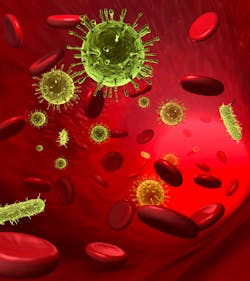WHO Releases Global Guidelines to Prevent Bloodstream and Other Infections Caused by Catheters
On May 9, the World Health Organization (WHO) published the first global guidelines to prevent the occurrence of bloodstream and other infections caused by use of catheters placed in minor blood vessels during medical procedures.
There is a high risk of introducing germs directly into the bloodstream due to poor practices being carried out in the insertion, maintenance, and removal of these catheters. Introducing these germs can lead to conditions like sepsis and complications in major organs like the brain and kidneys. Additionally, soft tissue infections at the insertion site can occur.
A press release on the guidelines says that “Up to 70% of all inpatients require the use of a catheter inserted into a peripheral vein or artery, also known as peripherally inserted catheters (PIVCs), at some point during their hospital stay. People who receive treatments through catheters often are particularly vulnerable to infections, as they might be seriously ill or have low immunity. WHO estimated that between 2000–2018, average mortality among patients affected by health care-associated sepsis was 24.4%, increasing to 52.3% among patients treated in intensive care units.”
Further, “Many bloodstream infections are caused by antibiotic resistant bacterial infections. It is estimated that bacterial antimicrobial resistance (AMR) was directly responsible for at least 1.27 million deaths and contributed to an additional 4.95 million deaths in 2019.”
The new guidelines include 14 “good practice statements” and 23 recommendations on key areas for healthcare workers, including:
- education and training of staff
- techniques of asepsis and hand hygiene practices
- insertion, maintenance, access, removal of catheters
- catheter selection

